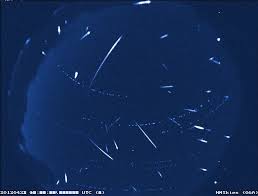The Lyrids will be the first meteor shower of 2021, catching the attention of astronomers.
Lyrid meteor showers typically appear between April 16 and April 25 of each year. This year, the Lyrids will peak on the night of April 22, the morning of April 23, with a density of about 18 meteors per hour. Notably, April 22 is also Earth Day.
Meteor showers can be observed in all localities of Vietnam, but the conditions and weather in each location will greatly affect the sight of meteors.
The Lyrids are known as the late-rain “meteor drought” because between January and mid-April, there is no significant meteor shower. Therefore, even though this is just a medium density meteor shower, Lyrids has always been expected by astronomers.
The name Lyrids comes from the constellation Lyra, due to the tendency for meteors to radiate in this region of the constellation.
However, viewers do not need to find the location of the constellation Lyra to see the meteor shower, as the Lyrids will appear anywhere in the sky. The best viewing time is just before sunrise. Viewers should choose open, dark areas to observe the phenomenon.
Meteors are the remnants of debris from celestial bodies such as comets. The lyrids come from comet C / 1861 G1 Thatcher, discovered in 1861. Thatcher is expected to cross our planet again in 2276.
It is also one of the oldest meteor showers on record in history. In 678 BC, Chinese history books on the appearance of the Lyrids were “shooting stars like rain”.
Every few decades, Earth receives an epidemic of Lyrids, which can reach up to 100 star trails per hour. In 1922 in Greece and in 1945 in Japan, astronomers observed Lyrid explosions.
Additionally, about a quarter of Lyrid meteors leave long trails of light as they fly across the sky. These are traces of ionized gas and incandescent a few seconds after the passage of the meteor.


